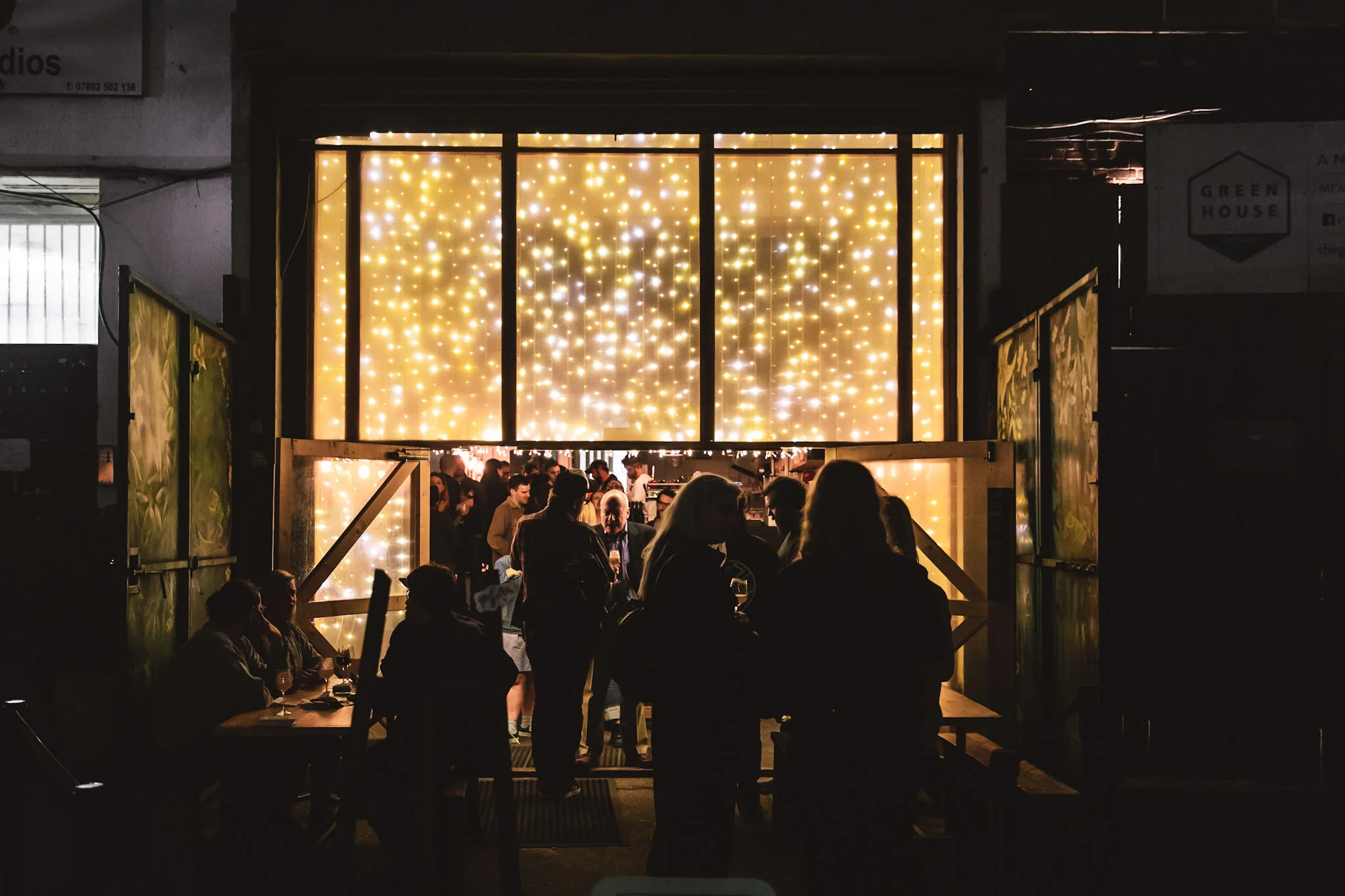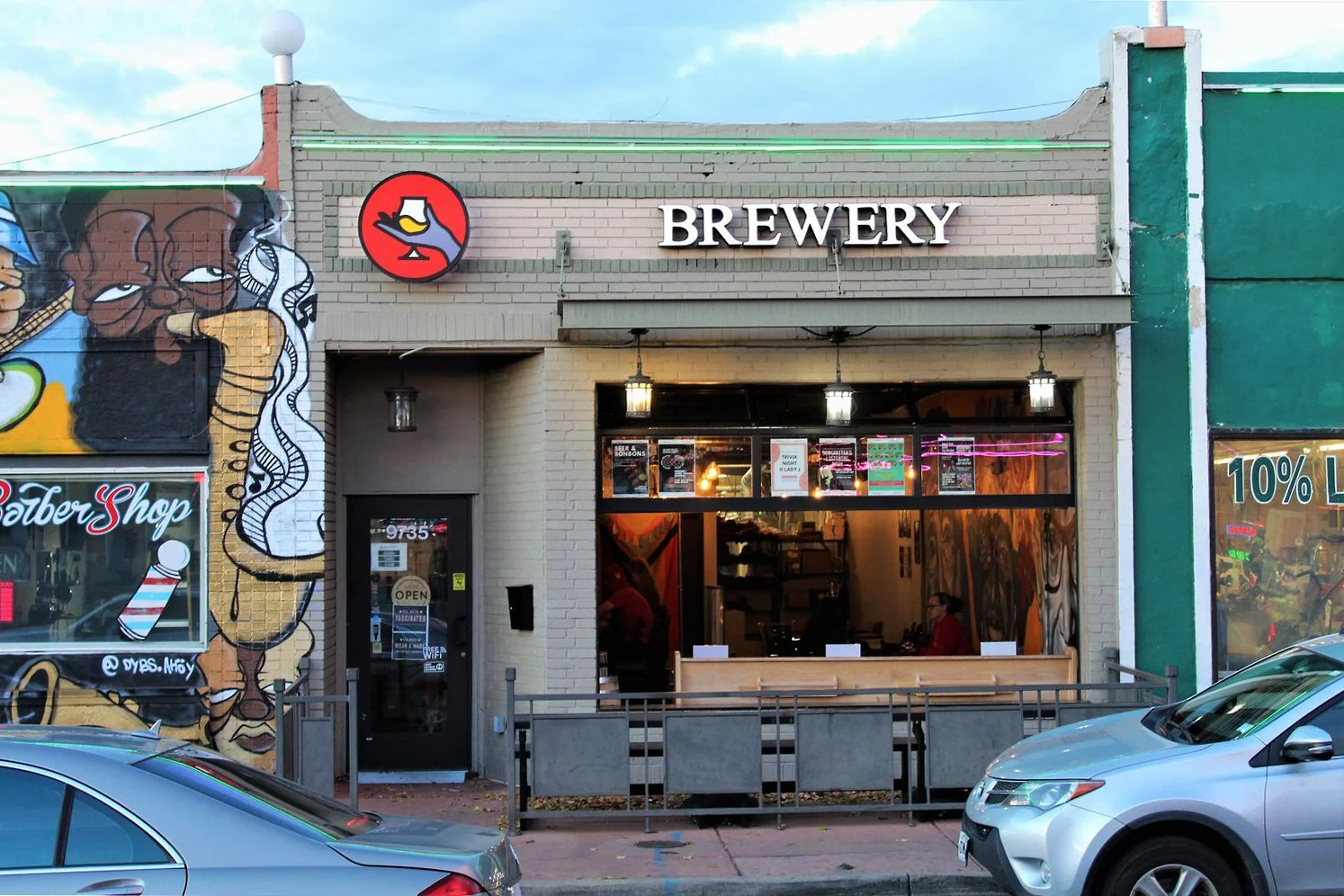All In A Day's Work — Mother Stewart’s Brewing in Springfield, Ohio
Mother Stewart’s Brewing in Springfield, Ohio, takes its name from an unlikely source—Eliza Daniel Stewart, an early leader in the Women’s Christian Temperance Movement, a vanguard in the fight for Prohibition in the United States.
Born near the manufacturing town of Springfield in 1816, Stewart was a thorn in the side of saloon keepers across the state and railed against the scourge of alcohol on women, families, and working men. The brewery that now bears her name has an ironic affection for this courageous curmudgeon who would have opposed its existence if their time on Earth had overlapped.
Photography by David Nilsen.
“Although the name is a little tongue-in-cheek, we greatly admire Stewart’s efforts to better the lives of women in the late 1800s,” Kevin Loftis, who co-founded the brewery with his brother, John, tells me.
While on the opposite side of temperance from their namesake, Mother Stewart’s shares her solidarity with the working class. The mid-sized, blue-collar town of Springfield was the largest in the state without a brewery at the time Kevin and his brother began the project in 2015 and was just beginning to recover from years of economic depression after losing thousands of manufacturing jobs in the 1980s and 90s.
The taproom and beer garden situated in one of the city’s former factories downtown is now as much a community centre as anything. And the brewery’s line-up favours easy-drinking beer styles, encouraging several pints over warm conversation.
***
Kevin Loftis looks more the part of a labourer or a construction contractor than a hipster brewer of today [I, for one, am offended—Ed]. Salt and pepper grey his beard and short hair, and his clear and sincere blue eyes hold warm eye contact during conversation. His gravelly laughter has a way of putting people at ease.
After a year at a local college in 1992, he left Springfield for the University of Vermont—studying Asian studies, with a minor in small business and a self-designed "fermentation studies."
“I just had to get out of town,” he recalls. “I applied to Vermont and some other hippie, ‘jam band’ schools. I made the right decisions for all the wrong reasons.”
His explanation points to a tendency Kevin has to deflect credit for things going right. The acknowledgement of his own competence comes with shrugs and chuckles. Anyone who spends time with him could be forgiven for feeling they held the reins of the conversation and had been the one to impart knowledge. An attentive personality quickly learns better.
His brewing career started in Vermont while he was still in school, doing canning and grunt work at the esteemed Otter Creek Brewing in Middlebury.
“I would clock out from my regular job [on the canning line] and stay and work with the brewer for a while,” he recalls, looking at old photos of a long-haired youth with those same blue eyes.
His time at Otter Creek overlapped briefly with Rob Tod, a legend in American craft beer who left a few months later to found Allagash Brewing Co. in Portland, Maine.
“ “Beer is beer. It transcends all that stuff.””
Kevin completed the diploma course at the prestigious Siebel Institute in Chicago—which provides training for professional brewers—in 1997 and was put in charge of quality control for the rapidly expanding Otter Creek upon his return. It nearly ended his brewing career for good.
“Swabbing and agar plating was not the most exciting work. I left on the last day of 1998 and got out of the industry. My heart was not in it,” he remembers. “I did nothing in beer at that point. I [just] drank.”
The following years saw him having the adventures his hard-working college career had prevented. He joined his brother in Colorado to be a back-country ski guide. He served as a camera assistant for National Geographic photographer Joel Sartore in Chile. Eventually, he returned to Springfield and joined his father in the real estate development field. And that led to his interest in a broken down manufacturing complex that once housed the largest metal casket factory in the world.
***
A short alley off a downtown street leads to the Mother Stewart’s parking lot, and from there it’s a short walk around a crumbling brick outbuilding with missing windows to the hulking structure that houses the brewery. The multi-building complex is a humming hive of life today, but it was built to feed the death care industry.
The Springfield Metallic Casket Company built the original structure in 1915 and added on to it over the following decades. Skywalks connected the various buildings that vibrated with massive power presses and a coal powerhouse that provided juice for the whole operation.
“We had to tear out the old train tracks from the parking lot that brought in coal, and fill in the coal pit,” Kevin says. He’s found old pencil drawings that showed the underwater testing tank for the caskets was directly below where the brewhouse sits today.
“God forbid you get wet while you’re down there,” he says, pointing to the ground.
The company closed in the 1960s and was turned into a printing press until it was boarded up for good in the mid-aughts. The building was an eyesore by the time Kevin and his brother decided to start a brewery.
John, a general contractor, led the renovation, and the pair have left as many original features intact as possible. Massive exposed wooden beams and pillars support the brewing area and are visible all the way to the ceiling 30 feet above.
The attached taproom area has a lower ceiling and balances intimate cosiness with natural light and an expansive layout, sleek design elements juxtaposed with industrial rusticity. The entire building is a massive 36,000 square feet, of which the taproom takes up less than a quarter, with a large attached patio.
The versatile space allows Mother Stewart’s to operate as an event and concert venue. By the time Covid put a stop to gatherings in early 2020, the brewery was hosting an event of some sort virtually every day.
“I jokingly say we’re a community centre that happens to brew beer,” Kevin says. Despite Springfield’s 55,000 residents, this remains the city’s only brewery, and it’s become the gathering place for all walks of life in a town still recovering from financial hardship.
***
Springfield’s economic reality informs Kevin’s beer line-up, which favours approachable styles.
“We don’t have enough people with discretionary income to get more niche than craft beer already is,” he tells me. “I told my investors from day one, don’t look for me to be doing crazy styles. Beer is beer. It transcends all that stuff.”
The brewery has only two year-round beers. Witbier is a classic take on the Belgian style, with assertive coriander, subtle citrus, and a fluffy but dry and quenching body. Disco Dancer is a hazy IPA and is the brewery’s runaway best-seller.
Throughout the year, the brewery offers a porter, an Irish red ale, a handful of lager styles, and a sprinkling of thoughtful barrel-aged beers. In 2019, Kevin put his Fainting Goat Doppelbock into Rhum Agricole barrels, yielding a beer with grassy sugarcane funk, dried fruit, and notes of red liquorice.
““If I knew I could brew a spot-on Stella, I would, because that’s what I would drink 70% of the time.””
Having brewed through the boom of the mid-90s, just before the bust at the end of that decade, Kevin is wary of fads in the industry.
“The industry got a little frothy back then, forgive the pun,” he says. “There were a lot of one-trick ponies. We drove an RV from Otter Creek all the way to the Great American Beer Festival in ‘96, and there was a lot of nonsense that year. There were breweries whose whole logo was the dancing bear from the Grateful Dead and their beer was terrible and I’m sure they were doing great [financially].”
Nearly a quarter-century on, he sees some similarities to that era that make him uncomfortable.
“I believe we’ve gotten ahead of the consumer again,” he reflects. “There’s a lot of bad, gimmicky beer. There’s a lot of beers out right now that I’ll try and it’s not bad, but I don’t want a pint of it. And my rule has been that if I don’t want a second one of something, I don’t want to brew it.”
Kevin tells me about half the newcomers to the taproom ask for the closest thing he has to Bud Light, and he would love to brew a great pale lager for that crowd. He’s experimented with Pilsners with some success, but the brewery has very hard water, and he’s reluctant to mess with his water chemistry too much since many historical styles—Pilsner included—developed partially because of their local water profile.
“If I knew I could brew a spot-on Stella, I would,” he says. “Because that’s what I would drink 70% of the time.”
Most days find Kevin reaching for the Disco Dancer with its fragrant Citra, Simcoe, and Mosaic hops, or the recently retooled Porter, which Kevin believes is finally dialled in. He’s not immune to the irony of labouring over a 90s style like Porter in 2021.
“You could kind of say I’m brewing 90s style beer, along with a little barrel-ageing,” he says with his characteristically warm laugh. Throw in a killer hazy pale ale, and you have a beer portfolio built for a blue-collar town that’s light faded decades ago but is now being rekindled by a brewer who understands the importance of hard work.



























